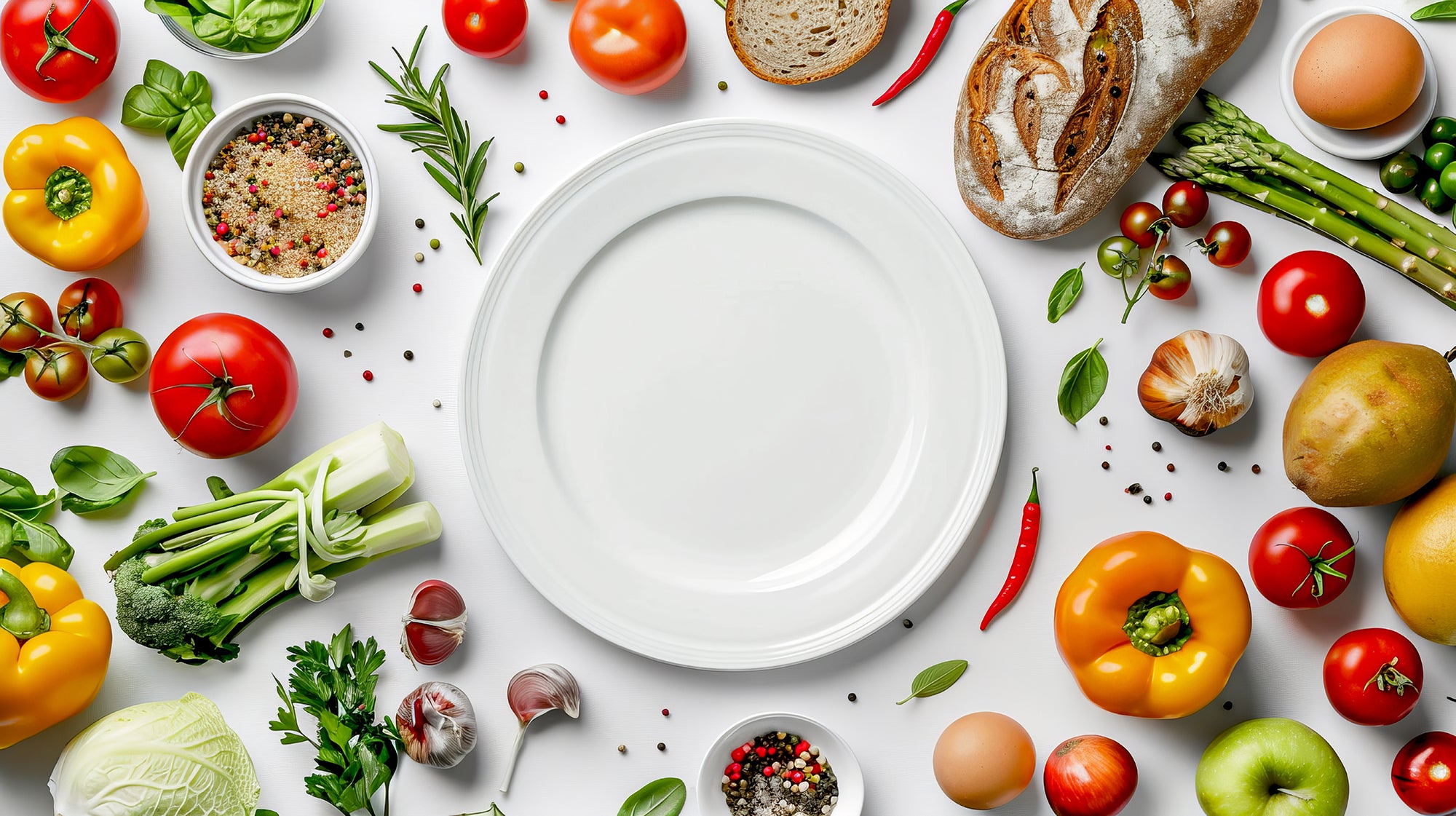Get a Free box of Gummies ($120 value) when you spend $200 or more. Now through Monday

Adopting a healthy lifestyle is essential for managing your health. One of the first things to consider is what you put on your plate in order to maintain a balanced diet. Also having reliable and understandable health information can help you achieve your health and wellness goals.
In this blog, we share with you steps to improve your health and how to maintain a balanced diet now and in the long term. So live well and enjoy what lies ahead!
While there isn’t a single, accepted definition of a balanced diet, we can agree that it involves consuming food from all the food groups in order to guarantee that the body receives the best nutrients possible to ensure it can function properly and to support your overall health.
Here are some areas that help to keep you on track with
Variety
Macronutrients such as carbohydrates, protein and fat make up the majority of nutrients in a balanced diet. Each food group includes numerous food choices that provide needed energy and essential nutrients such as vitamins, minerals, and trace elements to support optimal growth, metabolism, and cellular health.1 Not one food or food group can provide all of the nutrients needed by the body, therefore we need to mix things up a bit.
Servings
General guidelines recommend specific quantities of servings from each food group, including vegetables, fruits, grains, protein, and dairy. Additionally, it’s vital to include some healthy fats and oils in your diet on a moderate basis. Healthy monounsaturated oils like extra virgin olive oil and avocado oil provide necessary fatty acids, vitamin E, and are rich in antioxidants.
Also serving sizes should be taken into account when balancing a healthy diet. The number of daily servings from each group is determined by your ideal calorie requirements which vary for each person. Generally speaking, your caloric requirements are based on your age, gender, height, weight, and level of activity, as well as if you are looking to maintain, lose, or gain weight.
Hydration
Also, remember to drink enough liquids throughout the day, such as clean, filtered water, to stay hydrated. It is recommended that you consider avoiding or limiting your intake of sweetened beverages and minimizing your caffeine and alcohol intake as well.
To keep us in check, the U.S. Departments of Agriculture (USDA) and Health and Human Services (HHS) have established the Dietary Guidelines for Americans. These guidelines (most current 2020-2025), serve as a framework to support all Americans across all stages of life to help us understand what we should eat and drink to promote good health and avoid chronic health issues.2
The guidelines are based on scientific evidence on health-promoting diets in all Americans who are healthy, or at risk for diet-related diseases, and those living with these diseases.2
Though the guidelines are lengthy, here are 4 primary areas that the 2020–2025 edition focuses on:2
To help us even more, the USDA took the information in the Dietary Guidelines for Americans and created MyPlate, an incredible tool for people to use that visually communicates these health recommendations. Let’s see how we can use this to balance our own plate.
If you have used MyPlate to get an idea of what you should be eating to balance your diet or to better manage your weight, then you know that this teaching tool is easy to use and quite engaging. If not, definitely check it out. Also, the MyPlate Plan will provide your food group targets, focusing on what and how much to eat (servings) within your calorie allowance.
MyPlate uses the concept of a plate and suggests that we divide the plate into four sections.3
When choosing fruit, focus on whole fresh fruits like apples, apricots, clementines, cherries, berries, pears, or whatever delicious fruit is in season. Keep in mind that dried fruits are more concentrated with natural sugars so, consider going easy on these. Also, if canned fruits are on your list you will want to buy those that are packed in their natural juices, avoiding fruits canned in heavy syrups or frozen fruits with added sugars.
The aim of a balanced diet is to eat nutrient-dense foods that meet your needs. However, a person’s dietary intake can also be influenced by personal food preferences, medically prescribed diets, or other dietary restrictions such as gluten-free, dairy-free, soy-free, or egg-free diets. Individuals may also embrace religious as well as different social and cultural aspects of food.
With any modified diet, it is still essential that your dietary intake meets your specific nutritional requirements. A discussion with your healthcare physician and a Registered Dietitian is an excellent way to identify any nutritional gaps that may need to be addressed.
A well-balanced diet contains nutrient-dense foods and provides the calories required to maintain a healthy intake. Consider limiting your intake of highly processed foods, sodium, saturated fats, and added sugars.
Setting one or two short-term goals and tracking your progress daily will bring you closer to developing healthy habits. These small victories add up over time, eventually becoming part of your long-term goals and successes.
Talk to your doctor about your calorie and nutritional requirements. You can also consult a Registered Dietitian, who can assist you in creating a personalized meal and snack plan.
A balanced diet is only one part of a healthy lifestyle — be consistent with getting in some physical activity daily, even if it means just moving more than what you are doing now.
These statements have not been evaluated by the Food and Drug Administration. These products are not intended to diagnose, treat, cure, mitigate, or prevent any disease. Individual results may vary. The information provided in this blog is for educational and informational purposes only and should not be construed as medical advice.

Ken Swartz, MS is the co-founder, Chairman Emeritus, and former Chief Science Officer at C60 Power, a health and wellness company committed to delivering the highest quality Carbon 60 products available. Ken earned a Master of Science degree from the University of Colorado at Denver and a Bachelor of Science in Economics from Arizona State University.’
References